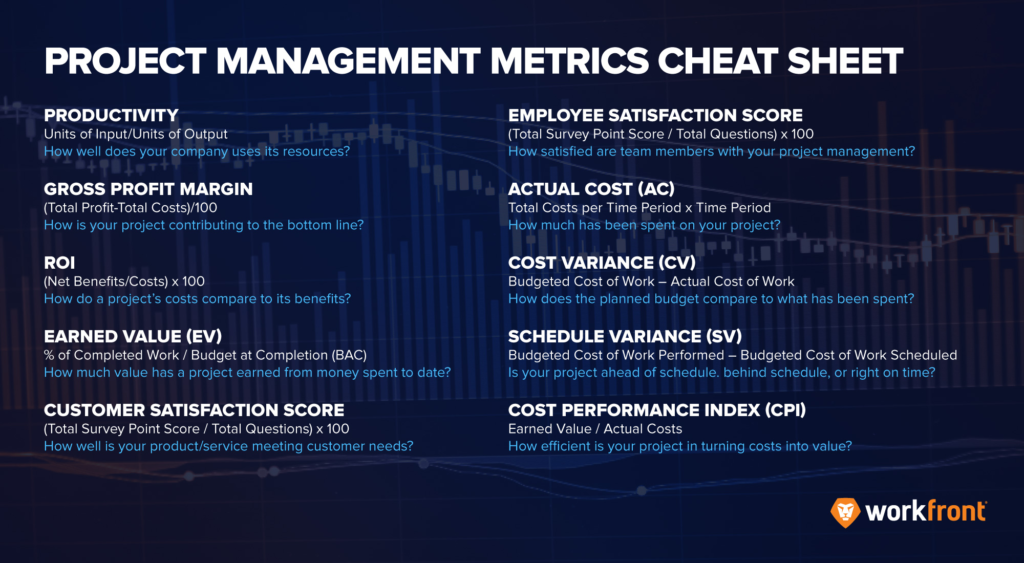As students of project management, we tend to focus on the end goal(s): Run a project efficiently, ensure each team is accomplishing their tasks on time and in scope, maintain within scope/budget/timeline, and the list goes on. However, how are these actually quantified? How do we know if we are accomplishing these things along the way and know how to plan better for the future outside of just the objective outcome? Metrics. Metrics allow the project manager to evaluate things such as are tasks being completed on time/late and by whom? Ultimately, the goal of metrics is to increase performance, the main recipe to success.
I found an article/document posted by Workfront, an industry leader in project management tools that points out a lot of areas to get started on measuring metrics, but one that really stuck out are these three ways to choose metrics:
- Understand the purpose or goal of the project or work
- Determine what critical success factors need to be fulfilled in order for you to succeed and achieve the goal
- Take each critical success factor for the project or program and identify how you will measure its fulfillment
The three points mentioned seem self explanatory from a conceptual perspective – but they are the roots of figuring out how the project manager needs to approach metric-tracking. #2 is especially critical because this, to me, refers to KPIs, or key performance indicators. These help to indicate whether the major areas/milestones in a project are being fulfilled. Once those KPIs are specified and the project manager completes some basic preparation, they may may move onto #3, which is speaking with the project members (technical employees) and any SMEs (subject matter experts) that will help navigate the PM in the proper direction to specify the metrics to be tracked.
The same article provides a “metrics cheat sheet” which very cleanly points out the different metrics that a project manager should look into evaluating, then tweaking them and drilling out the specifics based on the organization they are working for or supporting. Please see the image below for the 10 metrics that Workfront points out:

Personally, I have not yet been in a professional position where I have had to use metrics. However, in my project management class, I was able to utilize the Gantt Chart and WBS to evaluate which specific members are completing their tasks, who is not, and how to improve everyone’s productivity. There were times that I noticed certain members were not advancing with their tasks, or there were some that were close to being completed and they did not know how to move forward. I took that as an opportunity to speak with them and figure out questions such as: do you have everything you need to complete the task? Do you understand the task? Are you too busy to complete this on your own? How can I help you to complete this task? Although I did not have a fancy tool that helped me to track metrics on production, having a one-stop-shop for all of the tasks to be done, their current progress in percentage, their start/end dates, and the specific person responsible, I was still using metrics to help maximize our efficiency and productivity as a project team.
Thank you for reading and please leave a comment below with any questions or comments!
0 Comments